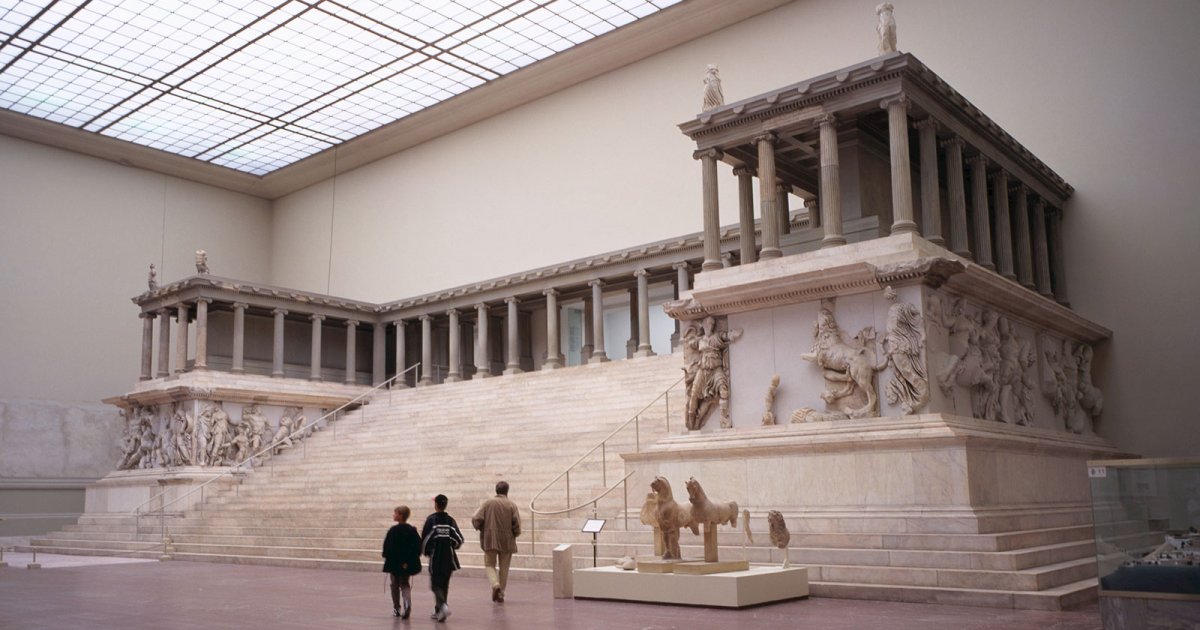MUSEUM ISLAND, Pergamonmuseum - Works
 Language: English / USA
Language: English / USA
The most famous works on display in the Pergamonmuseum are the Pergamon Altar, the Market Gate of Miletus and the Ishtar Gate.
You can see the Altar in the central part of the building. It’s an impressive sight, although most of it is a reconstruction: only the large sculpted frieze running along the bottom is entirely original.
This huge altar once stood on the acropolis of Pergamon, in Turkey, dominating the entire valley below. It was built between 170 and 159 B.C. to give thanks to the gods for the victory over the neighboring Galatians.
The huge central steps are set into a high plinth. The upper part is composed of a portico formed by columns. The most interesting element of the work is the frieze that runs along the base, with a high relief depicting the legendary Gigantomachy, the battle between the Gods and the Giants who tried to climb up to the peak of Mount Olympus, the home of the Greek gods, and who were defeated and put to flight.
Other classical exhibits include the imposing Market Gate of Miletus, built during the Roman Empire in the rich, famous Greek city of Miletus, also in Turkey. The Gate has, however, been reconstructed with modern materials.
The Ishtar Gate, meanwhile, is located in the south wing, at the end of the Processional Way, a 30-meter-long stretch flanked by two rows of lions, like the entrance into Babylon, the ancient capital of Mesopotamia, now in Iraq.
This enormous gate was one of nine entrances to Babylon, and was dedicated to Ishtar, the goddess of love and war. It is covered in blue and gold glass-like ceramic tiles with animal figures. Take note of the bulls, sacred to the god Adad, and other strange creatures: the mushussu, legendary dragons covered in scales, with the head and tail of a snake, the body and front paws of a lion and the hind claws of an eagle, emblems of the god Mardùk. These creatures were designed to protect the entrance to Babylon, warding off enemies.
An interesting fact: the sculptures that embellish the frieze on the Pergamon Altar, like most ancient statues, were originally entirely painted so as to appear more lifelike. Over the centuries, the colors have faded away, leaving the white marble we see today.



